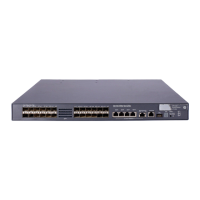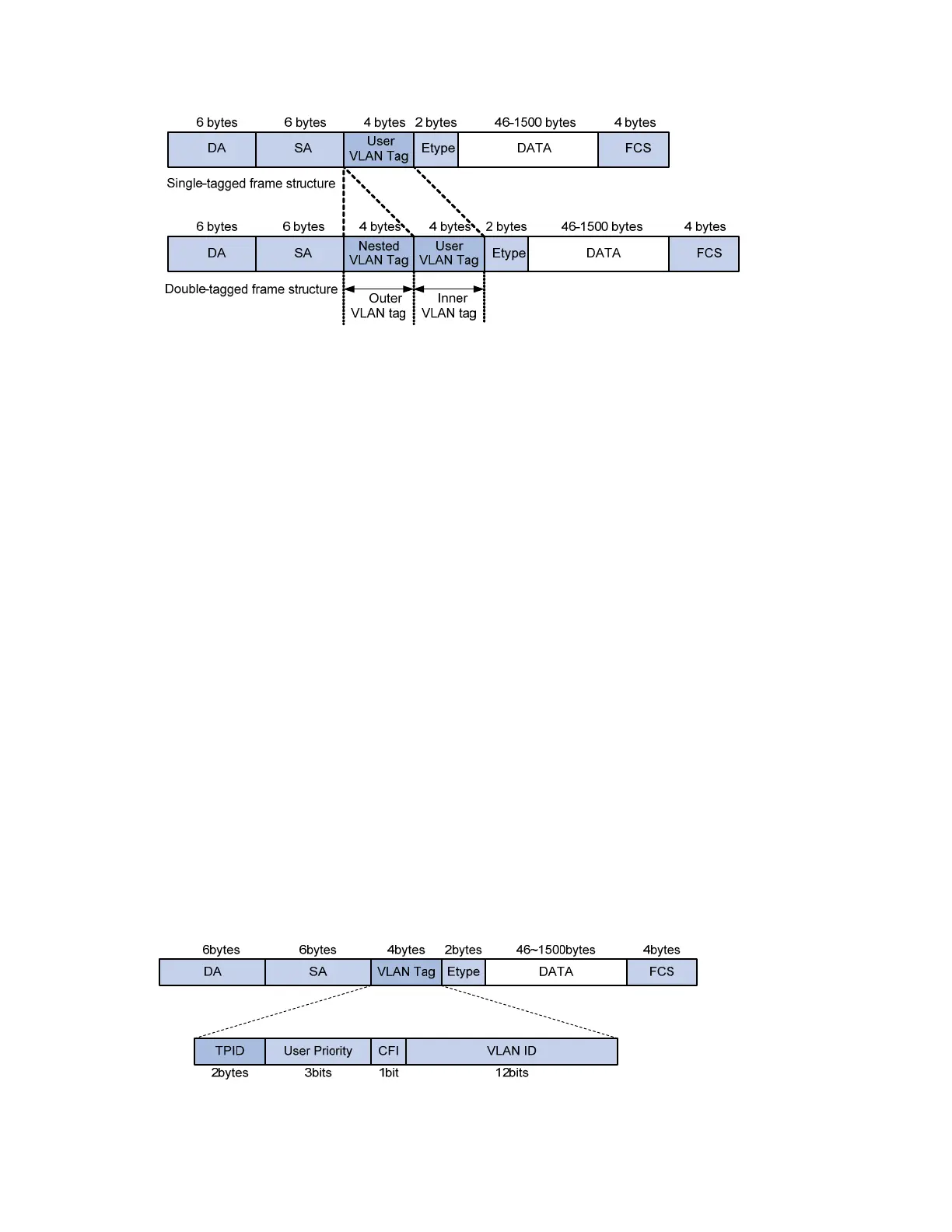163
Figure 54 Single-tagged Ethernet frame header vs. double-tagged Ethernet frame header
The default MTU of an interface is 1500 bytes. The size of an outer VLAN tag is 4 bytes. HP recommends
you to increase the MTU of each interface on the service provider network to at least 1504 bytes. For
more information about interface MTU configuration, see the chapter “Ethernet port configuration.”
Implementations of QinQ
HP provides the following QinQ implementations: basic QinQ and selective QinQ.
1. Basic QinQ
Basic QinQ enables a port to tag any incoming frames with its default VLAN tag, regardless of whether
they have been tagged or not. If an incoming frame has been tagged, it becomes a double-tagged frame.
If not, it becomes a frame tagged with the port’s default VLAN tag.
2. Selective QinQ
Selective QinQ is more flexible than basic QinQ. In addition to all functions of basic QinQ, selective
QinQ enables a port to perform the following per-CVLAN actions for incoming frames:
• Tagging frames from different CVLANs with different SVLAN tags.
• Marking the outer VLAN 802.1p priority based on the existing inner VLAN 802.1p priority.
• Modifying the inner VLAN ID, in addition to tagging the frame with an outer VLAN tag.
Besides being able to separate the service provider network from the customer networks, selective QinQ
provides abundant service features and allows more flexible networking.
Modifying the TPID in a VLAN tag
A VLAN tag uses the TPID field to identify the protocol type of the tag. The value of this field, as defined
in IEEE 802.1Q, is 0x8100.
Figure 55 VLAN tag structure of an Ethernet frame

